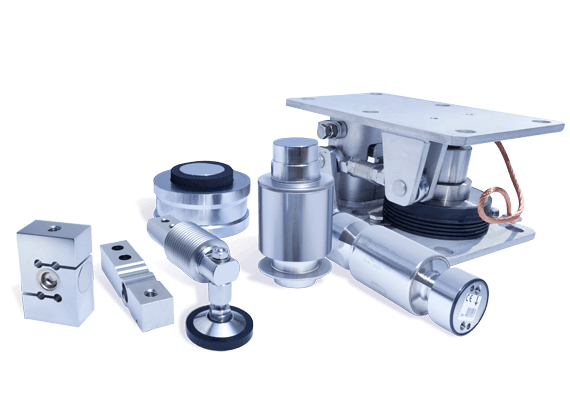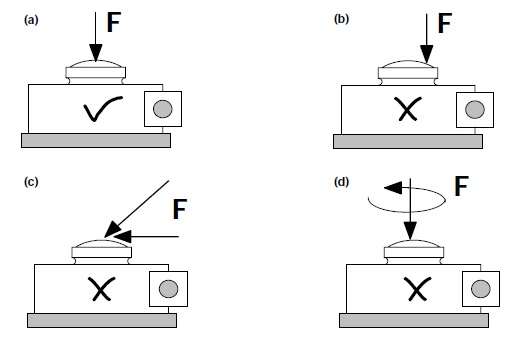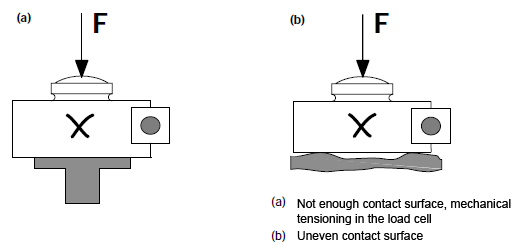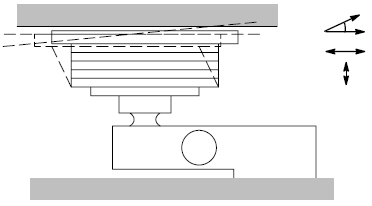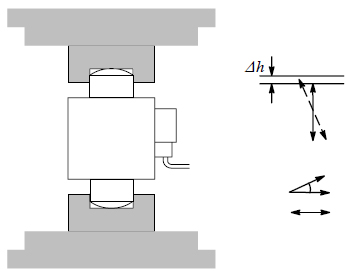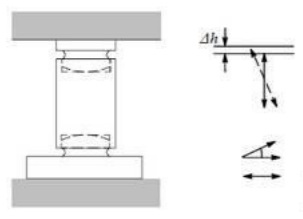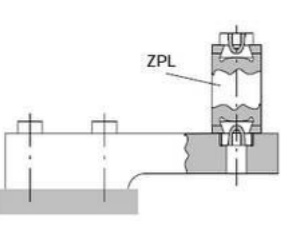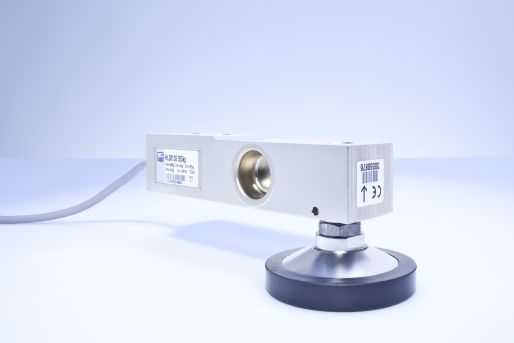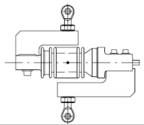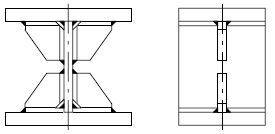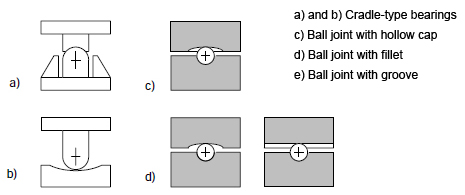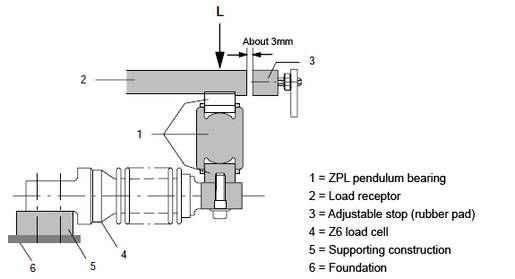Anti-liftoff devices
If the center of gravity of the tank is above the support points and the effects of wind or other external forces cannot be excluded, the tank must also be protected against tipping or lifting.
This can be achieved by stops on a second level or by a special anti-liftoff device. An anti-liftoff device can be implemented, for example, by vertical threaded rods used in the vicinity of the support points. The threaded rod is guided through a hole in the foot on the tank side with no contact. In that case the maximum distance between the support and tank bracket is determined by a nut found on the threaded rod. The size of the hole in the tank bracket also makes it possible to restrict the maximum lateral displacement.
Stay rods
When non-self-restoring bearings are used, stay rods are recommended for restraining the tank. The stay rods must be dimensioned and aligned so that they receive externally applied forces, but apply only the slightest possible force in opposition to the movement of the tank.
The following formats have proven effective for stay rods:
Tensioning ropes:
Tensioning ropes do not transfer any forces in the vertical direction, which makes them excellent for preventing unwanted force shunts.
Stay rods:
Stay rods are subjected to a tensile load in the longitudina direction by horizontal forces.
Two stay rods must therefore be used in each axis to ensure complete restraint.
Flat stay rods:
In flat stay rods the horizontal displacement that is received results in a longitudinal force. Vertical deflection causes bending that leads to a force shunt. Because the flat stay rod is bent in its direction of pliable bending, however, the effects are relatively minor even if large cross sections are twisted with clamping on both sides. It is essential to take into account the force shunts that occur when making the adjustment.
Clamping the stay rod with symmetrical clamping and screw connections (top and bottom) is especially recommended for dynamic excitation of the weighing system so that the bending distances will be identical with repeated loading.
Bolt stay rod:
The bolt stay rod results in only very minor force shunts in the vertical direction. However, even a very small tilt in the stay rods may cause clamping effects in the stay rods and therefore friction forces, which lead to vertical force shunts. Mounting therefore requires careful straightening work. The tank restraints must also be set up so the displacements that occur cannot cause the bolt stay rods to tilt.
Stay rods with rod end bearings:
Stay rods with rod end bearings behave essentially like bolt stay rods. Because the pivot joint bearing is free to move on all sides, however, tilting is avoided. Other than the horizontal alignment of the stay rods required during installation, these stay rods with rod end bearings are insensitive to manufacturing and installation tolerances of the tank construction.
To avoid the danger of the joints seizing, the rod end bearings must be protected if they are used externally.
In the final installation position the rod end bearings should be offset by 90° (in contrast to what is shown in Figure 4-18) so that they are integrated into the structure offset from each other.
